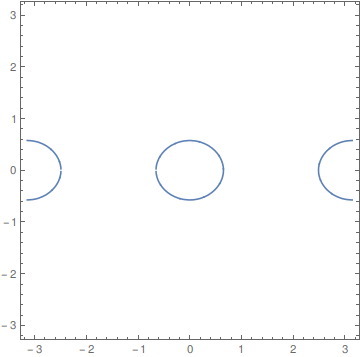Let $\Omega \subset \mathbb{R}^n$ be open, convex and bounded with smooth boundary. Define
$$\mathcal{A}(\Omega) = \left\{ C \subset \Omega \ \big\vert \begin{array}{l} \text{for any subharmonic function } \varphi : \Omega \rightarrow \mathbb{R} \\ \text{there exists a harmonic function } h_{\varphi} : \Omega \rightarrow \mathbb{R} \\ \text{such that } h_{\varphi} \leq \varphi \text{ on } C \text{ and } h_{\varphi} \geq \varphi \text{ on } \Omega \setminus C \end{array} \right\}.$$
Maybe it is helpful to restrict to closed $C \subset \Omega$.
If $n = 1$, then $\mathcal{A}(\Omega)$ is the set of all (closed) intervals in $\Omega$. For $n \geq 2$ and sufficiently nice $C$, the restriction of $h$ to $\overline{C}$ has to be the solution of the Dirichlet problem with boundary conditions given by $\varphi$. But then the (non-trivial?) task of extending the solution from $\overline{C}$ to $\Omega$ remains.
Are there any characterizations of (the elements in) $\mathcal{A}(\Omega)$ for $n \geq 2$? Do you know references where this kind of question is studied?
Edit: As pointed out below, it holds
$$ \mathcal{A}(\Omega) = \begin{cases} \text{the set of (closed) intervals in } \Omega & n = 1 \\ \{ \emptyset, \Omega \} & n \geq 2 \end{cases} $$
because for any $C$ there exist subharmonic functions on $\Omega$ that can't coincide with the values of a harmonic funtion on $\partial C$. Thank you for your help so far!
Let $B(C) = \{ \varphi : \Omega \rightarrow \mathbb{R} \ \vert \ \exists \text{ harmonic } h : \Omega \rightarrow \mathbb{R} \text{ s.t. } h = \varphi \text{ on } \partial C \}$. Then we could consider
$$\mathcal{A}'(\Omega) = \left\{ C \subset \Omega \ \big\vert \begin{array}{l} \text{for any subharmonic function } \varphi \in B(C) \\ \text{there exists a harmonic function } h_{\varphi} : \Omega \rightarrow \mathbb{R} \\ \text{such that } h_{\varphi} \leq \varphi \text{ on } C \text{ and } h_{\varphi} \geq \varphi \text{ on } \Omega \setminus C \end{array} \right\}.$$
Is it still true that $\mathcal{A}'(\Omega)$ is trivial for $n \geq 2$? Perhaps this question goes too far ... I'm actually a little bit surprised that there is no (easy) analogue to the one-dimensional case.


